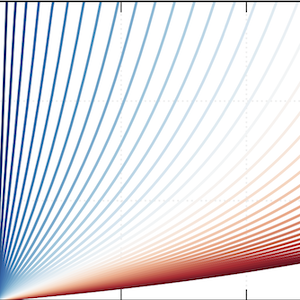Abstract
Understanding the thermodynamic properties of electrolyte solutions is of vital importance for a myriad of physiological and technological applications. The mean activity coefficient γ± is associated with the deviation of an electrolyte solution from its ideal behavior and may be obtained by combining the Debye-Hückel (DH) and Born (B) equations. However, the DH and B equations depend on the concentration and temperature-dependent static permittivity of the solution ε(c, T) and the size of the solvated ions ri, whose experimental data is often not available. Here, we use a combination of molecular dynamics and density functional theory to predict ε(c, T) and ri, which enables us to apply the DH and B equations to any technologically relevant aqueous and nonaqueous electrolyte at any concentration and temperature of interest.
